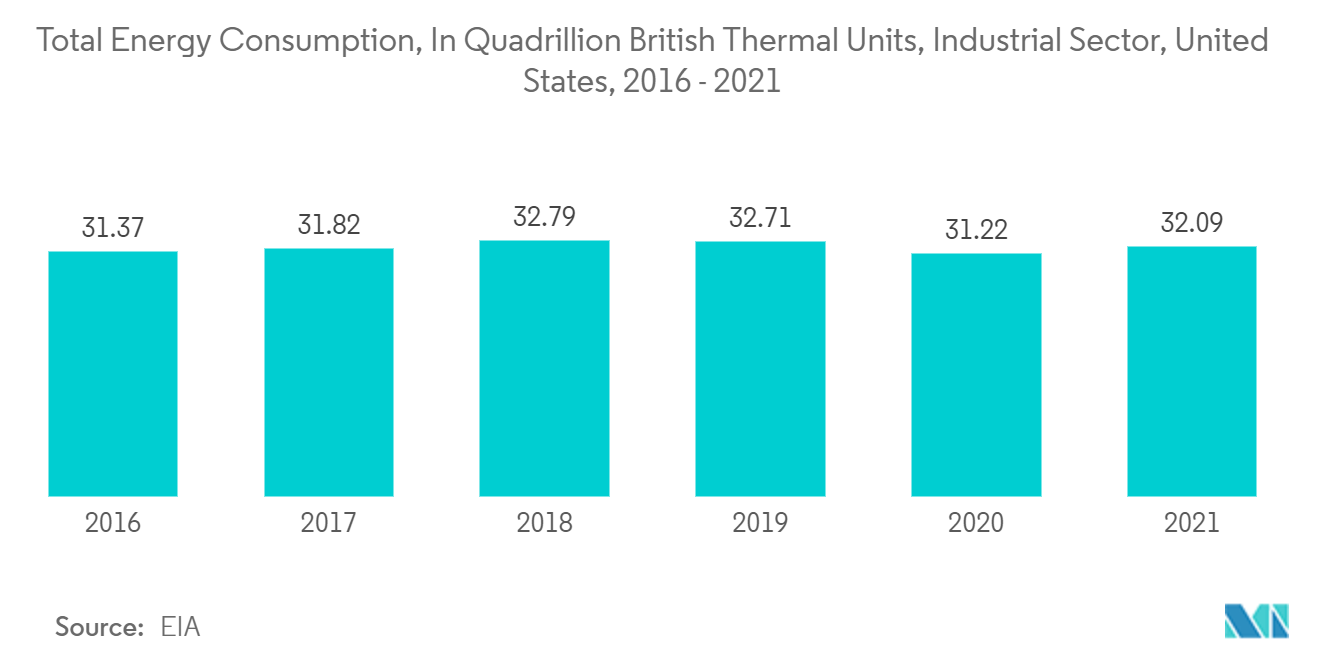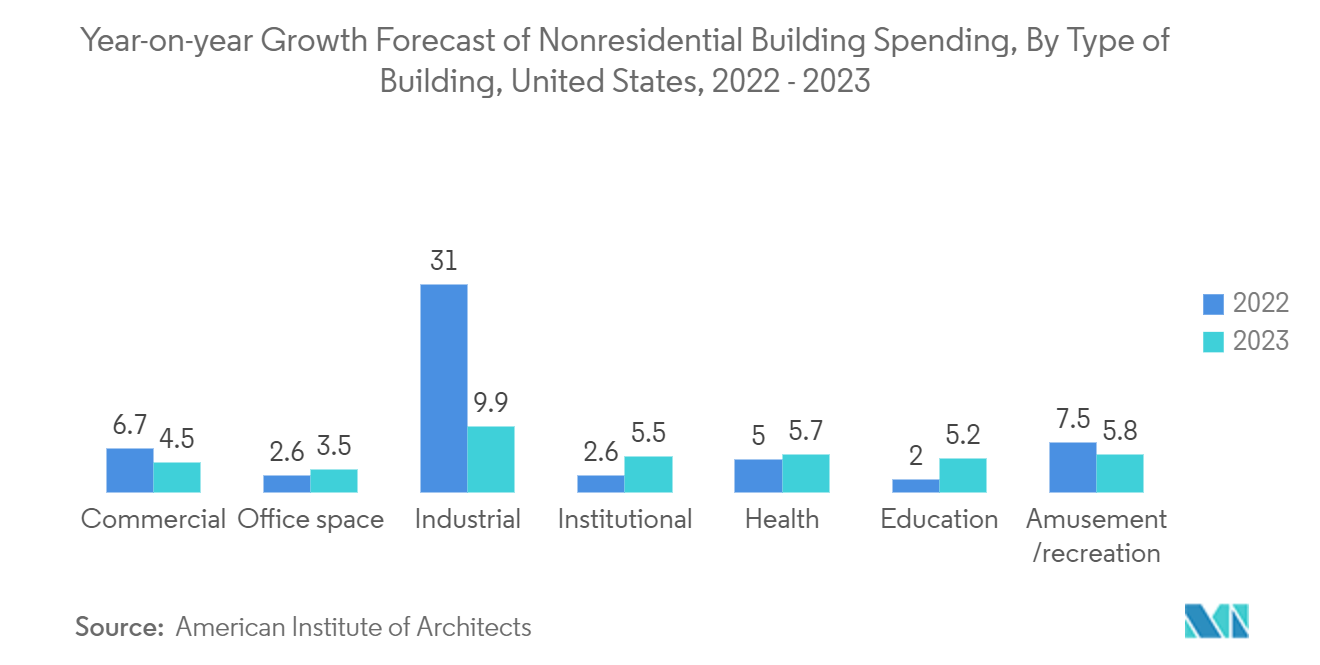Market Trends of US HVAC Services Industry
This section covers the major market trends shaping the US HVAC Services Market according to our research experts:
Industrial and Commercial Segment to Grow Significantly
- Energy consumption in manufacturing facilities and commercial buildings accounts for nearly half of all energy consumed in the United States, costing approximately USD 200 billion annually. HVAC services are witnessing growth, owing to the increasing need to install and maintain the existing system's energy efficiency.
- Commercial HVAC units require a significant amount of space and are generally located on the rooftops of buildings, such as shopping malls, hotels, big restaurants, theaters, and commercial offices. Awareness about the impact of the indoor environment on the way people think, feel, and act has triggered the trend of building wellness, thereby impacting the growth of HVAC services in offices, hotels, and other commercial spaces.
- Additionally, the smart HVAC (heating, ventilation, and air conditioning) systems increase penetration in the United States, owing to increasing government regulation regarding energy emissions from commercial buildings across the country. For instance, the US General Services Administration installed a smart building technology in 50 of the federal government's most energy-consuming buildings.
- Services for HVAC systems installed in commercial buildings are being developed to provide full-time on-site operation staff and energy consulting services. This will reduce operational costs and improve the overall HVAC performance in buildings.
- The overall industrial energy consumption in the United States alone stood at 32.09 quadrillion Btu in 2021, requiring the country to take considerate measures to reduce the environmental impact.

New Installations Segment is Expected to Contribute to the Growth
- The demand for HVAC services has been on the rise owing to the increase in construction activities in the residential, commercial, and industrial sectors. According to data from the Associated General Contractors of America, construction expenditure hit an annual rate of USD 1.74 trillion in April 2022, 12.3% higher than in April 2021.
- According to the US Census Bureau, in August 2022, construction spending in the region remained strong. It was estimated at an adjusted annual rate of USD 1,781.3 billion, with an 8.5% increase compared to USD 1,641.6 billion in August 2021.
- Implementing HVAC during construction should comply with several regulations and standards. For instance, adhesives, sealants, mastics, primers, paints, and coatings applied within the building waterproofing envelope should comply with low-emission requirements. Further, the proper maintenance of system components keeps HVACs operating at peak efficiency - implement a maintenance program to ensure that all parts, including motors, pumps, fans, compressors, ducting, and filters, are intact and working effectively.
- New energy-efficient HVAC systems are replacing traditional HVAC systems, which need installations. New technologies are required in the HVAC system to increase energy efficiency, reduce energy costs, and lower carbon emissions.
- According to Construct Connect, March 2022's volume of construction, excluding residential work, was USD 34.4 billion, an increase of 31.8% compared with February's figure of USD 26.1 billion. The new construction projects across residential, industrial, and commercial industries are expected to create opportunities for the market over the forecast period.


